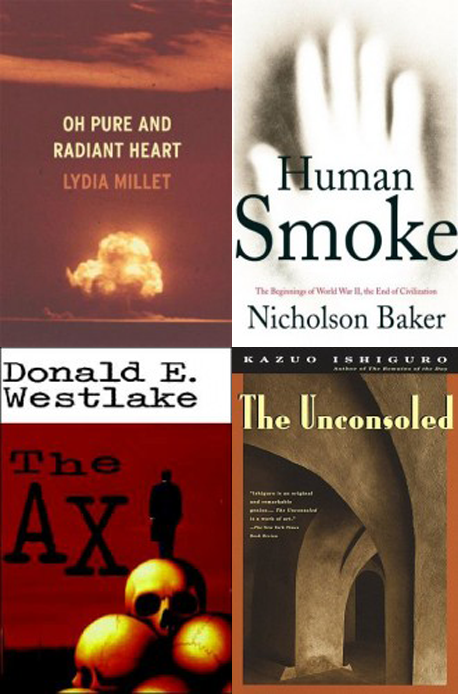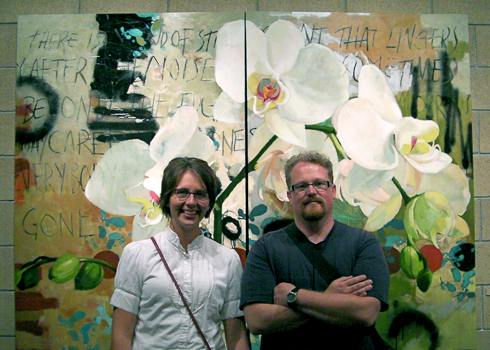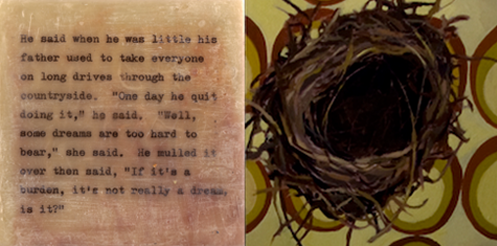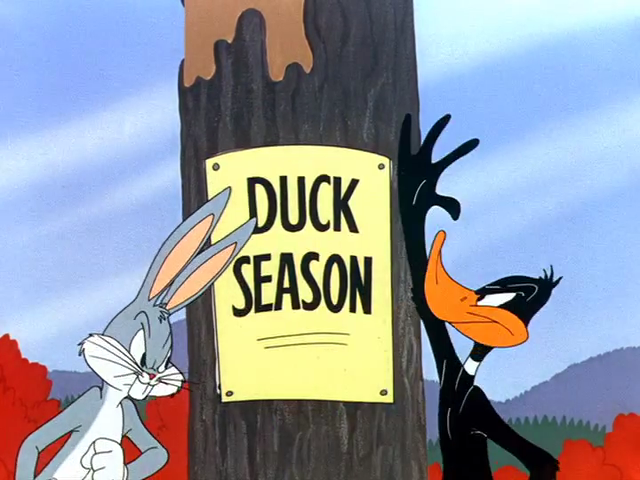This weekend we took a trip to the big city. We didn’t tell the kids what we were up to, we just packed them a bag, put some treats into little Christmas sacks, and piled into the van. Once we were saddled up, we told them that we were going to Salt Lake to see The Lower Lights Christmas show at the Masonic Temple.
We’d do a little shopping (we tasted most excellent chocolate and fifty-year-old basalmic vinager at Caputo’s), then see the show. We’d sleep in a hotel and in the morning get breakfast at our favorite little café. (If you have a chance to get breakfast at Pennyann’s Café, you won’t regret it). After that, we’d head home and get ready for the last week of school before Christmas.
The concert was fantastic, especially after five years of listening to their music on Sundays and holidays. If you don’t know who they are, The Lower Lights is a kind of local Utah supergroup of Latter-day Saint musicians who have been making records of traditional hymns in a style I’d call it roots or Americana. Some might call it folk, others country, maybe old-timey. Many of them have their own bands and their own gigs. They aren’t Christian musicians in the traditional sense, and not really traditional Mormons: there were a lot of beards and jeans on stage.
With The Lower Lights there is a wonderful sense of community between the audience and the band. The show was full of foot-stomping revelry, huge layers of vocal harmonies, screaming Telecaster chicken pickin’, ethereal pedal steel guitar swells, good humor, and a reverence for both the gospel music tradition and the gospel of Jesus Christ.
Their music is the one of the few times I feel a through line between my faith and art that touches me. I love my adopted church, which I joined in college when many young people are finding their way out of the faith traditions of their familes. Mormon theology is both and ancient and modern, conservative and really trippy, and in almost every way it’s made me a better person than I would be if I was left to my own devices.
I have to say, however, that I really can’t stand Mormon aesthetics. It’s actually more accurate to say that I don’t like Christian aesthetics, which in my opinion, are almost entirely lacking in subtlety. Christian art leaves very little room for me, as an individual, to think my own thoughts or to have my own reactions. For me, Christian art is almost always a sermon when I need it to be a friend. Art that shares my aesthetics usually doesn’t share my faith. Conversely, art that shares my faith usually doesn’t resonate with me aesthetically. I used to get mad about this. These days, I just realize that it’s not gonna happen, and move on with my life.
The Lower Lights is one of a few exceptions. There is an earthiness to their music—stringiness and stompitude. Like the spirituals played by blues and country musicians, I get a sense that their love of God is coming from the mouths of sinners like me. They are David dancing for joy. For all the power of the Mormon Tabernacle Choir and for all of their technical perfection, I do not feel like I am supposed to sing along with them. With The Lower Lights, it is expected.
My publisher, Zarahemla Books, is another haven. Folks like Joanna Brooks, the guys in the band Fictionist, the Segullah bloggers, the Modern Mormon Men bloggers, my old Sugarbeet gang: they are all out there being the in the world but not of it. When I feel like there’s no room in the church for a scruffy ex-Catholic now-Mormon fiction writer like me, I look around at these people and my friends near and far, inside of the church and out, and realize an important message we used to sing about at YMCA summer camp: “All God’s critters got a place in the choir/some sing low and some sing higher.”






 The process began a couple of months ago. We shared our work and had a few long conversations about what was possible. After those first meetings, we set a few ground rules. First, we didn't want to create the show around the idea of illustration; the images and words had to be on an equal footing and not duplicate each other too much. Second, we wanted to influence each other so that we all wound up in a new place. And third, we wanted to explore the relationship of reading and looking, which is a really complicated matter, one I am really interested in looking into a little more deeply.
The process began a couple of months ago. We shared our work and had a few long conversations about what was possible. After those first meetings, we set a few ground rules. First, we didn't want to create the show around the idea of illustration; the images and words had to be on an equal footing and not duplicate each other too much. Second, we wanted to influence each other so that we all wound up in a new place. And third, we wanted to explore the relationship of reading and looking, which is a really complicated matter, one I am really interested in looking into a little more deeply. I got the first sense of these pressures on the night of the opening. We have one large collection of work called "The Conversation" in which we matched small paintings with small story paintings that consisted of a short bit of dialogue. Some dude came in and bought two of the stories, effectively splitting them from the context of their partner image. As he walked off with one of the gallerists, the small crowd of about ten people went into an outrage. They said things like, "You can't split them up, you just can't. Make him come back and buy the nest."
I got the first sense of these pressures on the night of the opening. We have one large collection of work called "The Conversation" in which we matched small paintings with small story paintings that consisted of a short bit of dialogue. Some dude came in and bought two of the stories, effectively splitting them from the context of their partner image. As he walked off with one of the gallerists, the small crowd of about ten people went into an outrage. They said things like, "You can't split them up, you just can't. Make him come back and buy the nest."
